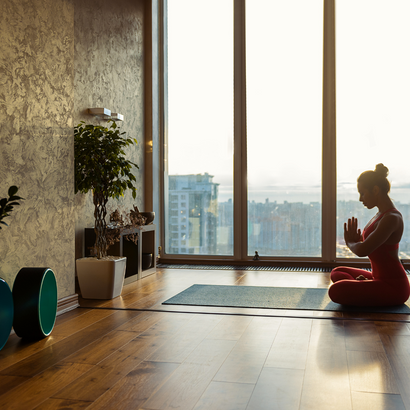Your Cart is Empty
Orders are processed within 1-2 business days, Mon-Fri., for regular and expedited orders.
Orders are processed within 1-2 business days, Mon-Fri., for regular and expedited orders.
5 Ways to Prioritize Wellness in Your Interior Design
When you hear the word “wellness”, you might picture doctors in white coats or dismal waiting rooms. That image is changing as fast as the wellness segment. What once focused on medicinal is now focused on the functional -- and has become a priority for retailers, designers, and architects.
Incorporating essential oils, biophilic design, sound baths, and acupuncture are now mainstream. The trend of pausing, resetting, and creating inner peace is now a lifestyle.

As people spend more time searching for inner happiness and health, business opportunities are growing alongside it, officially qualifying “wellness” as big business – a 4.3 trillion dollar business, in fact, that continues to morph and grow at an exponential rate. From sustainable materials to repurposing multi-functional spaces to biophilic workplaces, the future of design lies “within.”
According to the 2021 Pinterest Predicts, an overview of trending searches, wellness categories like manifestation, bathing and sleep rituals, mindfulness and mood lighting are skyrocketing.
Wellness Design Trends:
1. Mood Lighting

From the beginning of time, our bodies have naturally reacted to light: we wake up with the sun and go to sleep when it’s dark. With the implementation of artificial light, not only do we disrupt our natural circadian rhythms, some research implies that fluorescent lights may cause migraines, eye strain, and dizziness. Seasonal affective disorder—aka “The Winter Blues”—often occurs in people during the dreary, gray winter months due to the absence of the full-spectrum of light we normally receive from sunlight – and our bodies and minds often respond in a negative way.
Many people are turning to mood lighting to improve their state of mind, adding in blue, purple green and other color-changing illumination to regulate sleep cycles, boost productivity, and improve mood (note: different colors create different psychological results). GE has recently created C-Sleep which is a bulb that transitions between three colors to match your circadian rhythm, ranging from bluish to soft white to amber depending on the time of day.
2. Calming Colors

Color truly has a voice and a purpose! Each hue affects your psychology – and is subjective to each person, specifically between men and women. Lighter, soothing colors like soft blues and greens tend to impart a feeling of calm and tranquility (which is why they are the most popular bedroom colors), while brighter colors like orange and yellow incite creativity. The actual percentage of the color also has a major impact. For example, the color blue can relay feelings ranging from stability and tranquility to sadness or productivity based on its intensity (but it’s also the least “appetizing” color, so don’t use it in the restaurant. Try orange instead!).
Check out some of our favorite neutrals to find a shade that suits your mood. Use them individually or as a palette for the entire home!
3. Biophilia

It’s said that we as humans are intrinsically tied to nature, and physically need its resources to properly thrive. Think of how a sunny day can literally brighten your mood.
Biophilia means “love of life,” an affinity for living things and the natural world.
The “biophilia effect” describes the many positive impacts people have during the sensory experience of nature: sight, sound, smell, or feel. In architecture and design, there has been a trend toward creating more harmonious, thriving, and nurturing environments. Creating atmospheres that connect us to the natural world results in less stress, increased mood, and higher functionality.
In interior design, plants are showing up as finishes, edibles and vertical gardens, organic materials to replace synthetics and using more organic patterns and color palettes.
4. Meditation Areas

What we think, we become - Buddha
Do you often find yourself saying: where did the time go, how is it another week…another year? If we don’t take the time to stop and take moments to “be present,” it’s likely that time will lead the way for us, and we’ll wake up one day wondering how life has passed us by. Setting aside time, and a space, to reflect and be in the moment (it takes practice!) will help you become more intentional -- and present -- in your daily life.
See how to make a meditation room in 5 easy steps here!
5. Full Spectrum Paint

Our bodies and minds are tied to the natural world. Exposure to full-spectrum light (now available in light bulb form) prompts your body to produce serotonin and melatonin, two hormones that are important for healthy minds and sleep cycles. Full-spectrum paint is created to reflect the full range of natural light (using no black), making them more luminous in nature and harmonious with other design elements in the room. Read more about full-spectrum paint here.
View our Wellness Color Palette
Also in Color Confidential
Subscribe
Sign up to get the latest on sales, new releases and more …
Recent Articles
- How Builders Using C2 Paint to Position Themselves as Industry Leaders

- These Paint Color Palettes Can Transform Your Smaller Bathroom into a Luxurious Respite
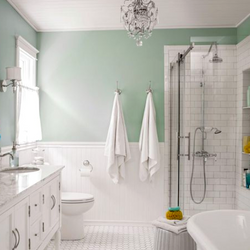
- 5 Ways to Harness the Power of Color in Your Interior and Exterior Paint Projects
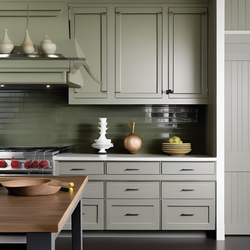
- The Ten Commandments of Choosing Color

- Refresh Your Home This Spring: Top Painting Projects (Plus Recommended Products!)
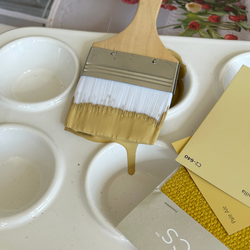
- The Ultimate Guide to Choosing the Perfect Deck Stain for Your Home
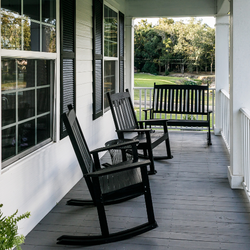
- Painting Kitchen Cabinets: Your DIY Guide to a Perfect Finish

- Boosting Your Home's Value: 6 Home Improvement Projects for Maximum ROI
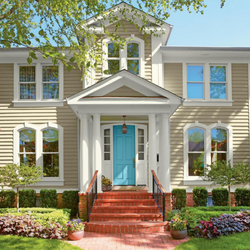
- Supercharge Your Aspirations by Choosing the Right Paint Color
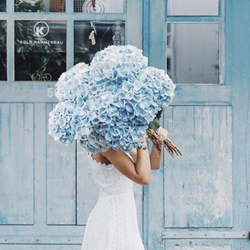
- Why Do Painters Prefer C2 Paint Color Tools?

Categories
- 2020 Color of the Year
- architecture
- art basel
- bathroom paint colors
- bedroom colors
- best bedroom color
- best blue paint 2019
- best green paint
- best grey paint colors
- best grey wall colors
- best neutrals
- best paint colors
- best paint colors for 2020
- best white paint color
- black and white
- black paint
- blue mood board
- blue paint
- blue paint color
- blue paint colors
- C2 paint
- c2 partners
- c2paint
- calming bedroom colors
- calming paint colors
- ceiling paint
- ceiling paint color
- christmas list
- classic paint colors
- color combinations
- color of the month
- Color of the Year
- color of the year 2023
- color palette
- color theory
- color tips
- color trends
- design miami 2018
- design tips
- design trends 2021
- design trends 2024
- eco-friendly
- exterior paint colors
- feng shui paint colors
- full spectrum
- full spectrum color
- full spectrum paint
- gift guide
- gift guide 2021
- gray paint colors
- grey color trends 2010
- grey paint
- grey paint colors
- grey walls
- holiday gift guide
- holiday picks
- home improvement
- home office
- home painting
- home projects
- house paint
- house paint colors
- how to paint floors
- insider tips
- interior colors
- interior desi
- interior design
- interior design best paint colors
- interior design tips
- interior design trends
- interior designer
- interior paint
- interior paint colors
- luxury paint
- maximalism
- mediation room
- meditation
- meditation area
- mexico city
- millwork
- minimalism
- modern decor
- modernism weekly
- moodboard
- neon color trend
- nicole newkirk
- office paint colors
- orange
- paint
- paint color
- paint colors
- paint contractors
- painted furniture
- Philippa Radon
- stockholm design week
- surface design show
- sustainable interior design
- tiny homes
- travel
- trend report
- trends 2024
- vision board
- wall color
- wall paint
- white interior paint
- white paint
- zoe feldman
Subscribe
Sign up to get the latest on sales, new releases and more …
×
There’s a C2 Paint Dealer near you!
Visit the store to get exceptional, in-person service. Click below to see store details
See My Store